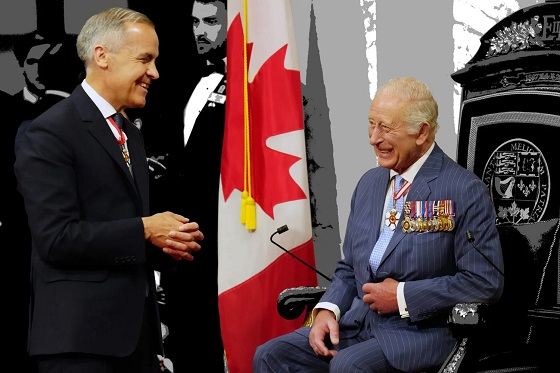Education
Pressure to enact smartphone restrictions spurs change among provinces

From the Fraser Institute
More than a decade ago, a Verizon commercial put a man holding his cellphone up to his ear in different locations across the United States, asking: “Can you hear me now?”
In Canada, it often seems like one end of the country doesn’t talk to the other, and policies look very different from west to east. But occasionally we’re reminded that we can learn from one.
For example, smartphone restrictions in K-12 classrooms. As the new school year draws near, this policy—in various forms, grounded firmly in research—is sweeping across Canada including British Columbia, Alberta, Ontario, Quebec, New Brunswick, Nova Scotia and Prince Edward Island.
Children and teenagers do not have a fully formed prefrontal cortex to help exercise self-control and limit their anxiety when smartphones are buzzing throughout the day. According to one study, the typical teenager receives 237 smartphone notifications per day—about 15 per hour. And according to the latest (2022) Programme for International Student Assessment report, 80 per cent of Canadian students feel anxious if their phones are not with them. Moreover, having a phone nearby, with notifications buzzing, is enough to cause students to lose focus on classroom tasks. One study found it took kids a full 20 minutes to regain focus after just one distraction.
So what’s the impact on student learning?
PISA research has found a clear connection between smartphone distraction and declining student achievement, particularly in math. Eighty per cent of Canadian students report being distracted by the devices of other students in math class—and students who were distracted by smartphones in math class scored 15 points lower on PISA math tests than those who were not distracted (PISA equates a 20-point drop in student test scores with one year of lost learning).
Of course, parents know this is a problem. According to a January 2024 poll, eight in 10 Canadian parents support banning smartphones in public schools.
Finally, while the research and polling support smartphone bans, the seven provinces that have enacted smartphone restrictions haven’t gone far enough. For example, Nova Scotia’s elementary school ban—which instructs elementary students to store their phones for the entire school day—is a great policy but doesn’t apply to junior high or high school students. Ontario’s failed 2019 restrictions provide a weaker example that didn’t work. And three provinces—Saskatchewan, Manitoba, and Newfoundland and Labrador—have not enacted any provincewide restrictions at all.
But thankfully, this upcoming school year, some provinces are learning from each another in an example of functioning federalism. Yes, we can hear you now—and in this case, children and teens will benefit.
Author:
Alberta
Schools should go back to basics to mitigate effects of AI

From the Fraser Institute
Odds are, you can’t tell whether this sentence was written by AI. Schools across Canada face the same problem. And happily, some are finding simple solutions.
Manitoba’s Division Scolaire Franco-Manitobaine recently issued new guidelines for teachers, to only assign optional homework and reading in grades Kindergarten to six, and limit homework in grades seven to 12. The reason? The proliferation of generative artificial intelligence (AI) chatbots such as ChatGPT make it very difficult for teachers, juggling a heavy workload, to discern genuine student work from AI-generated text. In fact, according to Division superintendent Alain Laberge, “Most of the [after-school assignment] submissions, we find, are coming from AI, to be quite honest.”
This problem isn’t limited to Manitoba, of course.
Two provincial doors down, in Alberta, new data analysis revealed that high school report card grades are rising while scores on provincewide assessments are not—particularly since 2022, the year ChatGPT was released. Report cards account for take-home work, while standardized tests are written in person, in the presence of teaching staff.
Specifically, from 2016 to 2019, the average standardized test score in Alberta across a range of subjects was 64 while the report card grade was 73.3—or 9.3 percentage points higher). From 2022 and 2024, the gap increased to 12.5 percentage points. (Data for 2020 and 2021 are unavailable due to COVID school closures.)
In lieu of take-home work, the Division Scolaire Franco-Manitobaine recommends nightly reading for students, which is a great idea. Having students read nightly doesn’t cost schools a dime but it’s strongly associated with improving academic outcomes.
According to a Programme for International Student Assessment (PISA) analysis of 174,000 student scores across 32 countries, the connection between daily reading and literacy was “moderately strong and meaningful,” and reading engagement affects reading achievement more than the socioeconomic status, gender or family structure of students.
All of this points to an undeniable shift in education—that is, teachers are losing a once-valuable tool (homework) and shifting more work back into the classroom. And while new technologies will continue to change the education landscape in heretofore unknown ways, one time-tested winning strategy is to go back to basics.
And some of “the basics” have slipped rapidly away. Some college students in elite universities arrive on campus never having read an entire book. Many university professors bemoan the newfound inability of students to write essays or deconstruct basic story components. Canada’s average PISA scores—a test of 15-year-olds in math, reading and science—have plummeted. In math, student test scores have dropped 35 points—the PISA equivalent of nearly two years of lost learning—in the last two decades. In reading, students have fallen about one year behind while science scores dropped moderately.
The decline in Canadian student achievement predates the widespread access of generative AI, but AI complicates the problem. Again, the solution needn’t be costly or complicated. There’s a reason why many tech CEOs famously send their children to screen-free schools. If technology is too tempting, in or outside of class, students should write with a pencil and paper. If ChatGPT is too hard to detect (and we know it is, because even AI often can’t accurately detect AI), in-class essays and assignments make sense.
And crucially, standardized tests provide the most reliable equitable measure of student progress, and if properly monitored, they’re AI-proof. Yet standardized testing is on the wane in Canada, thanks to long-standing attacks from teacher unions and other opponents, and despite broad support from parents. Now more than ever, parents and educators require reliable data to access the ability of students. Standardized testing varies widely among the provinces, but parents in every province should demand a strong standardized testing regime.
AI may be here to stay and it may play a large role in the future of education. But if schools deprive students of the ability to read books, structure clear sentences, correspond organically with other humans and complete their own work, they will do students no favours. The best way to ensure kids are “future ready”—to borrow a phrase oft-used to justify seesawing educational tech trends—is to school them in the basics.
Business
Why Does Canada “Lead” the World in Funding Racist Indoctrination?
-

 Business7 hours ago
Business7 hours agoICYMI: Largest fraud in US history? Independent Journalist visits numerous daycare centres with no children, revealing massive scam
-

 Daily Caller1 day ago
Daily Caller1 day agoWhile Western Nations Cling to Energy Transition, Pragmatic Nations Produce Energy and Wealth
-

 Daily Caller1 day ago
Daily Caller1 day agoUS Halts Construction of Five Offshore Wind Projects Due To National Security
-

 Alberta1 day ago
Alberta1 day agoAlberta Next Panel calls for less Ottawa—and it could pay off
-

 Bruce Dowbiggin1 day ago
Bruce Dowbiggin1 day agoBe Careful What You Wish For In 2026: Mark Carney With A Majority
-

 Energy2 days ago
Energy2 days agoWhy Japan wants Western Canadian LNG
-

 Business2 days ago
Business2 days agoLand use will be British Columbia’s biggest issue in 2026
-

 Business2 days ago
Business2 days agoMainstream media missing in action as YouTuber blows lid off massive taxpayer fraud













